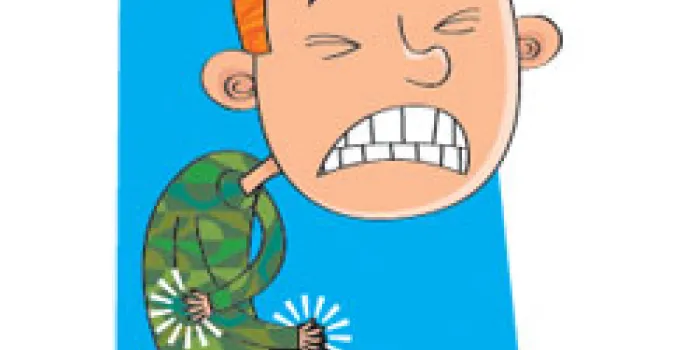Ever dropped something on your toe? Woken up with a sore throat? Or burnt your fingers on hot pizza? If these kinds of things have happened to you, then you have felt pain. Sometimes you might just say “ouch!” and be OK. Other times, pain can be more serious, and you have to talk to your doctor about it.
Pain can be an everyday part of life for kids with bleeding disorders. But pain is an important warning system in our bodies. It helps us recognize what might cause injury and lets us know when our bodies need extra care and rest.
As a kid, knowing when you’re in pain and learning how to tell others is very important! Here are some ways to recognize pain and what you can do about it:
Talking Back
At times it can be hard to tell others exactly how you feel. Even if it doesn’t seem like a big deal, it’s important to let your parents and doctors know.
Each face on a pain scale shows a person who is happy (no pain), sad (pain) or in between. You point to the face that best shows how you feel! That way, grown-ups will know more about how much pain you have, so you get the care you need.
Who to Tell?
Talking about pain lets people know how you’re feeling. The people to tell include your doctors, parents, teachers, babysitter, coach, school nurse, and hemophilia treatment center nurse.
Sometimes you might need to tell more about what the pain feels like and where it hurts. Does the pain stay in one place or does it move around? Does anything you do make it go away? When did it start hurting? What makes it worse?
There are many words to describe pain—ache, pull, tingle, burn, cramp or throb. Give as much information as you can.
Painful Signs
If you accidentally fall down and scrape your arm, it’s easy to see where you got hurt! Kids with bleeding disorders, though, don’t always see anything, especially if you have a bleed in your joints, like your ankles or knees.
Regular infusions of factor, or prophylaxis, are a good and healthy way to make sure bleeds don’t happen. But it’s still important to know the signs of a bleed so you can tell others about it. Here’s what to ask yourself:
- Is it hard for me to bend one of my joints?
- Does one of my joints feel warm or hot to the touch?
- Is it painful to put weight on my leg?
- Do I have a tingly or bubbly feeling?
If you answer “yes” to any of these questions, you might be having a bleed. If the pain is really bad, stop what you’re doing and tell the nearest grown-up.
Your family and doctors are there to help and listen. When you know how to talk about pain, you’ll be on the path to feeling better!

